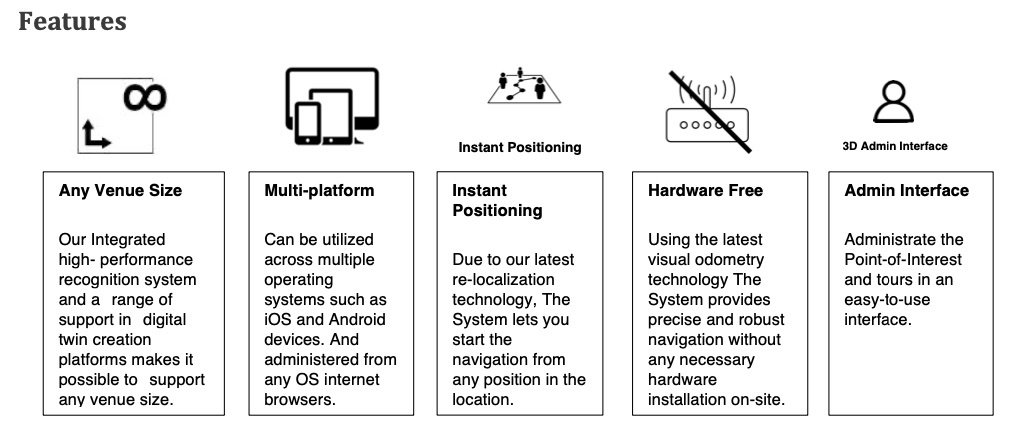
IOE Technologies Limited
Our localization approach V-IMU uses a smartphone, held by the user or worn on the chest, to acquire several video frames per second. A 3D digital map of the indoor environment matches the location, orientation and appearance of each sign in the environment. In each video frame, whenever a sign is recognized, the apparent size and perspective of the sign in the image determine the phone’s pose relative to the sign and therefore the user’s three-dimensional locations on the map. The novel approaches we employed are a smartphone-based system that exploits a new hybrid intelligent filtering approach to reduce the computational load and accuracy of localisation. V-IMU moves between different sensor fusion algorithms depending on the current level of certainty in the system, reducing the computational load of the tracking engine, maintaining good positioning performance, and improving battery life.
The system is App based. It can either be initialised using a white label app or the system can be integrated into an existing app using the SDK. The System is a platform-independent modular structure integrating the majority of hard- and software field-specific components available on the market.

The above demo shows how the application directs an user from a train station to a dedicated shop in a multi-storey shopping mall in Hong Kong.